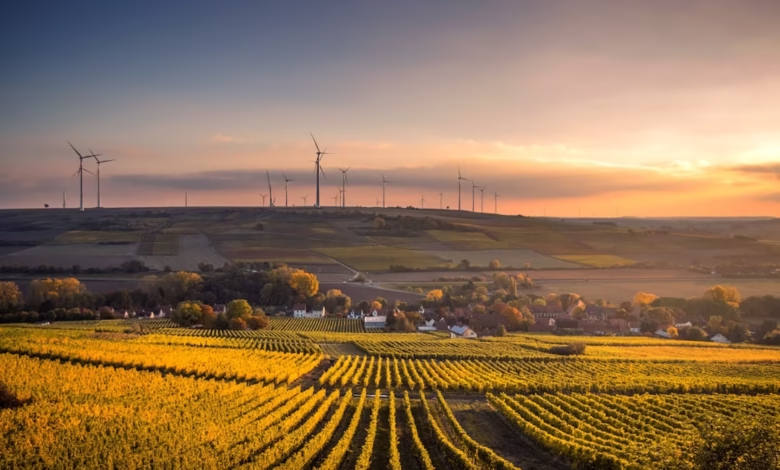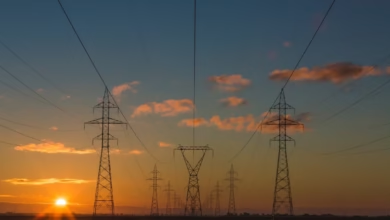Navigating the Global Energy Transition: Key Drivers, Renewable Innovations, and Policy Solutions Shaping the Shift from Fossil Fuels to Green Energy

The global push for a cleaner, more resilient energy future is transforming how the world produces, distributes, and consumes power. As climate change intensifies and energy security becomes a top priority, governments, businesses, and communities are accelerating the shift away from fossil fuels to embrace renewable energy sources like solar power, wind energy, and hydrogen. This energy transition represents a profound reimagining of our energy systems—driving innovation in green energy technologies, revamping energy policy frameworks, and reshaping global energy markets.
The momentum around reducing fossil fuel dependence is fueled by a combination of policy mandates, technological breakthroughs, evolving energy economics, and growing public demand for sustainable solutions. As renewable adoption expands, the integration of energy storage, advances in distributed energy, and development of smart grids are critical to maximizing energy efficiency and grid reliability. Meanwhile, ongoing research into carbon capture, offshore energy, advanced hydropower, and nuclear energy adds diverse tools to the future low-carbon energy mix.
This article explores the key drivers of the energy transition, highlights cutting-edge renewable energy innovations, and examines the policy and economic challenges facing energy stakeholders worldwide. By understanding the complexities behind global energy trends, we can better anticipate the opportunities and challenges that lie ahead in powering a cleaner and more sustainable world.
- 1. Key Drivers of the Energy Transition: Shaping Global Energy Markets and Reducing Fossil Fuel Dependence
- 2. Renewable Energy Innovations: The Growing Role of Solar Power, Wind Energy, and Hydrogen in Clean Energy Adoption
- 3. Overcoming Challenges in Energy Policy: Advancing Energy Storage, Grid Modernization, and Sustainable Energy Economics
1. Key Drivers of the Energy Transition: Shaping Global Energy Markets and Reducing Fossil Fuel Dependence
The accelerating energy transition is being driven by a combination of economic, technological, policy, and environmental factors that are reshaping global energy markets and steadily reducing the world’s reliance on fossil fuels. Growing concerns about climate change and the urgent need to cut greenhouse gas emissions are among the most significant motivators. As international agreements like the Paris Agreement set ambitious carbon reduction targets, countries are compelled to reevaluate their energy policy and make decisive shifts toward green energy sources such as solar power, wind energy, and hydropower.
Technological innovation is another major driver of the energy transition. Breakthroughs in renewable energy production, particularly advances in energy storage, smart grids, and distributed energy resources, have made these solutions not only more efficient but also more economically viable. This has encouraged increased energy investment in offshore energy projects, nuclear energy advancements, and hydrogen energy research as nations seek to diversify their energy exports and imports for greater energy security.
Economic considerations are also shaping energy dynamics. The falling costs of renewables, along with improvements in energy efficiency and energy R&D, are making renewable energy projects attractive from an energy economics perspective. Energy markets now favor investments in clean technologies like bioenergy, electric vehicles, and carbon capture systems as part of robust energy innovations that support a sustainable transition.
Government actions and regulatory frameworks further accelerate momentum toward renewable integration. Forward-thinking energy policy measures—including incentives for solar and wind energy adoption, mandates for thermal energy efficiency, and support for smart grids—are dismantling traditional barriers and enabling a more resilient, low-carbon energy transportation infrastructure.
Global energy trends indicate that distributed energy systems and grid modernization are helping countries reduce fossil fuel dependence while improving reliability and flexibility. Expansion in low-carbon energy sectors, coupled with strategic RD&D (research, development, and deployment) investments, signals a profound transformation of the world’s energy landscape, promoting both economic opportunity and long-term environmental stability.
2. Renewable Energy Innovations: The Growing Role of Solar Power, Wind Energy, and Hydrogen in Clean Energy Adoption
As the world accelerates its energy transition, innovative advancements in renewable energy are reshaping global energy markets and policy decisions. Among these innovations, solar power, wind energy, and hydrogen energy are emerging as leading drivers of clean energy adoption, helping to reduce reliance on fossil fuels and enhance energy security.
Solar power continues to make remarkable progress, thanks to breakthroughs in photovoltaic efficiency, energy storage, and distributed energy systems. Modern solar panels convert more sunlight into electricity than ever before, and new materials such as perovskite cells are expected to lower costs while increasing output. Coupled with advanced energy storage solutions, solar power is now a practical option for both urban and remote areas, providing reliable green energy day and night. Additionally, utility-scale solar farms, as well as localized rooftop installations, are allowing for more flexible integration into smart grids and supporting overall energy efficiency (IEA, 2023).
Wind energy is also experiencing significant innovations, particularly with the expansion of offshore energy projects and the development of taller, more efficient turbines. Offshore wind farms take advantage of stronger, more consistent winds, boosting capacity factors and improving the economics of renewable power generation. Recent advances in digital monitoring and predictive maintenance contribute to higher reliability and reduced operational costs, making wind energy a growing part of distributed energy resources worldwide (IRENA, 2023).
Hydrogen energy is increasingly recognized as a key enabler for the energy transition, especially in sectors that are challenging to electrify, such as heavy industry and long-distance energy transportation. Renewable hydrogen, produced via electrolysis using green electricity from solar and wind sources, offers a clean alternative to traditional thermal energy and can serve as a versatile energy carrier. Many countries are investing in hydrogen energy R&D and deploying pilot projects for hydrogen production, storage, and distribution, positioning it alongside other renewables as a major player in future carbon-neutral energy systems (IEA, 2022).
These renewable energy innovations not only drive energy investment but also have important implications for energy economics, energy exports and imports, and the fight against climate change. By further integrating solar, wind, and hydrogen solutions into energy grids, nations can strengthen their energy security, decrease dependence on fossil fuels and nuclear energy, and create a more resilient, low-carbon future.
References
International Energy Agency. (2022). Global Hydrogen Review 2022. https://iea.org/reports/global-hydrogen-review-2022
International Energy Agency. (2023). Solar PV Technology Roadmap. https://iea.org/reports/solar-pv-technology-roadmap
International Renewable Energy Agency. (2023). Innovation Outlook: Offshore Wind. https://irena.org/publications/2023/Mar/Innovation-Outlook-Offshore-Wind
3. Overcoming Challenges in Energy Policy: Advancing Energy Storage, Grid Modernization, and Sustainable Energy Economics
The global energy transition is driving a historic transformation in the ways nations produce, distribute, and consume power. However, shifting from fossil fuels to renewable energy sources presents complex challenges for energy policy that require multifaceted solutions. Addressing these obstacles is crucial to ensure energy security, stable energy markets, and the economic sustainability of this transition.
One of the most pressing issues is advancing energy storage. Renewable energy sources like solar power and wind energy are inherently intermittent, making robust energy storage solutions essential to balance supply and demand. Recent innovations in battery technology and thermal energy storage have improved the reliability of distributed energy, but further energy R&D and investment are needed to scale these solutions affordably (International Energy Agency, 2023, https://www.iea.org/reports/world-energy-outlook-2023). Strategic support for hydrogen energy and bioenergy can also provide flexible backup for variable green energy sources while supporting climate change goals.
Grid modernization is equally vital. Traditional grids were designed for predictable, centralized fossil fuel and nuclear energy generation—not for the variable flows of renewable energy and distributed generation. Deploying smart grids enables real-time monitoring, demand response, and integration of electric vehicles, offshore energy, and hydropower. Modernizing transmission and distribution infrastructure, paired with advanced grid management software, boosts energy efficiency and resilience, helping prevent blackouts and ensuring reliable energy transportation.
Sustainable energy economics must also be prioritized in energy policy. Developing effective incentives for energy investment, carbon capture projects, and efficient energy markets will accelerate the shift to renewable energy while minimizing negative impacts on consumers and industries. Policymakers need to address energy imports and energy exports to ensure fair competition and energy security in an increasingly globalized market (World Bank, 2024, https://www.worldbank.org/en/topic/energy/publication/global-energy-review-2024). Furthermore, integrating carbon pricing and aligning subsidies with green energy objectives can direct resources toward energy innovations that support long-term energy transition goals.
Ultimately, coordinated progress in energy storage, grid modernization, and energy economics will shape the success of global energy trends in moving away from fossil fuels. By tackling these challenges, energy policies can create a robust foundation for a resilient, sustainable, and equitable energy future.
References
International Energy Agency. (2023). World Energy Outlook 2023. https://www.iea.org/reports/world-energy-outlook-2023
World Bank. (2024). Global Energy Review 2024. https://www.worldbank.org/en/topic/energy/publication/global-energy-review-2024
Conclusion
The global energy transition is redefining energy markets and shaping a more sustainable future. Reducing dependence on fossil fuels is not simply an environmental imperative—it is now an economic and strategic necessity, reshaping global energy trends and energy policy. Through remarkable renewable energy innovations, such as advanced solar power systems, scalable wind energy solutions, and emerging hydrogen energy applications, the potential for clean and green energy has never been greater. Alongside these advancements, enhanced energy storage, modernized smart grids, and improved energy efficiency are crucial in overcoming persistent barriers.
Furthermore, integrating distributed energy, offshore energy assets, and thermal energy advancements supports both energy security and economic resilience. Investments in energy R&D and infrastructure for electric vehicles, bioenergy, and hydropower are vital to accelerating decarbonization and responding to climate change imperatives. As nations balance energy exports and imports, strategic energy investment and thoughtful energy economics will underpin long-term success.
Ultimately, the ongoing energy transition requires a unified commitment to innovative solutions, forward-thinking energy transportation systems, and robust carbon capture initiatives. By embracing a diversified mix of renewables—including nuclear energy as a low-carbon foundation—and prioritizing sustainable energy policies, governments and energy leaders can secure a resilient, affordable, and environmentally responsible energy future for generations to come.





